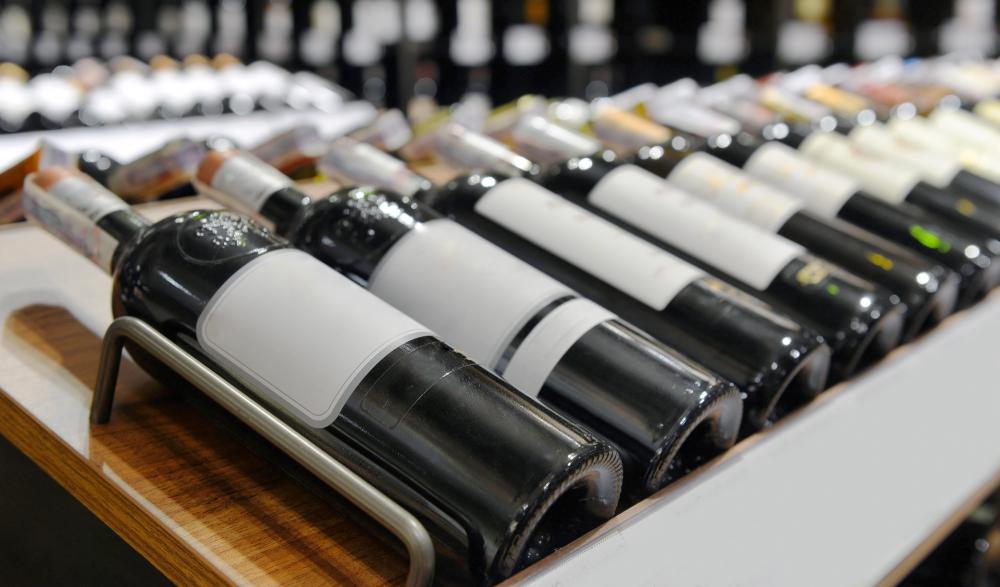At WiseGEEK, we're committed to delivering accurate, trustworthy information. Our expert-authored content is rigorously fact-checked and sourced from credible authorities. Discover how we uphold the highest standards in providing you with reliable knowledge.
How do I Braise Pork?
The steps you take to braise pork are the same as when braising other types of meat. No matter the type of meat involved, braising is a cooking method in which meat is first seared at a high temperature and then simmered in a small amount of liquid at a low temperature until it is tender. Choosing the appropriate type of pork and carefully following the proper steps can help you create a delicious meal of braised pork.
When choosing your meat, stick with less expensive, tougher cuts of pork. Braising is ideal for pork shoulder, butt, belly, ribs, ears or hocks. The long cooking time and the moist environment break down the tough connective tissue and fat in these cuts and turn them into collagen, which will further break down and dissolve into gelatin. The magic of braised pork occurs when the tough and leathery muscle fibers weaken and absorb the surrounding melted fat and gelatin, resulting in a hearty, flavorful meal of complex intermingled flavors. Lean cuts, such as tenderloins, will only become tough with the extended cooking time.

To braise pork, first sear the pork in order to brown its surface. Dry the meat with a paper towel, season it with salt and pepper, and heat a spoonfuls of oil or butter in your pot. Either an enameled cast iron pot or Dutch oven with a tight-fitting lid is ideal, but a slow cooker will also work.
Sear the meat on all sides over medium-high heat until it browns and starts to develop a nice crust. Turn the meat gently with long tongs, taking care not to splatter any hot oil. Contrary to popular belief, this searing of the meat's surface does not "seal in the juices." Rather, browning the meat deepens the flavor of both the meat and the sauce.

After it is browned, remove the pork from the pan and set it temporarily on a plate or cutting board. Add a small amount of cooking liquid, typically stock, to the pot and deglaze the pan by scraping up any pieces of meat or spices that are stuck to the bottom. The pork can then be returned to the pan, along with any accumulated juices.
Next, add a bit more cooking liquid, approximately halfway up the piece of meat. Stock is most commonly used, but sometimes a combination of stock and a more acidic liquid such as wine, beer or tomato juice is used. Vegetables, seasonings and herbs can also be added to the pot at this time.

The dish is then covered and cooked slowly over a low heat until the meat is tender. This can be done over low heat on a stove top, over a fire, in a slow cooker or more commonly, on the middle rack of an oven that has been preheated to about 325 degrees Fahrenheit (163 degrees Celsius). Braise pork for several hours until it is completely tender. The length of time will vary based on the type and thickness of pork. The duration is not absolutely critical, but if braising continues long after the pork is tender, the meat will become dry and stringy.
Also be aware that allowing the liquid to boil during the braising time will adversely affect the tenderness of the meat. Make sure that the liquid is kept at a simmer. Check the pot periodically to see whether more liquid needs to be added.

When the meat is very tender, remove the meat and vegetables and set them aside. Use a slotted spoon or strainer to skim the fat from the sauce. If the sauce is too thin, boil it down until it starts to thicken, adding salt and pepper to taste. Braising is classic "one pot" cooking.
Braised pork makes delicious leftovers that can be stored in the refrigerator or freezer. Some believe that the flavors improve with time, so the pork can be braised a day or two ahead if desired. After the basic technique is mastered, it also can be fun to experiment with different spices and liquids to produce different results. One flavor combination that works especially well when you braise pork is white wine and chicken stock for the cooking liquids, flavored with fennel and sage.
AS FEATURED ON:
AS FEATURED ON:

















Discussion Comments
Yeah, braising is such an easy way to do pork, and nearly any other meat, especially the tougher cuts. It takes longer for some things (like brisket), but it's usually worth the trouble.
I have a big Dutch oven and I can easily braise even a larger cut like a small butt or picnic shoulder in that pot. I just add a little water once in a while. When the meat temps at 150 degrees, it's done.
I think braising should be one of the first cooking methods any new cook learns, simply because it's almost always successful, and it's a great fall back method, just in case something else doesn't work.
One of the first main meals I ever cooked was braised pork chops. It's the easiest recipe ever. I just sprinkled the chops with flour, salt and pepper, and usually some Italian seasoning.
I brown the chops in oil and then placed sliced onion on top. I add about 1/3 cup of water and when the pan has deglazed, I cover it, lower the heat and cook the chops for about 30-40 minutes, or until they're tender. I always cook my chops in a cast iron skillet, and to me, it's by far the best way to do it. The chops are always tender and juicy.
Post your comments